| Home | Flights | Hotels | Diary |
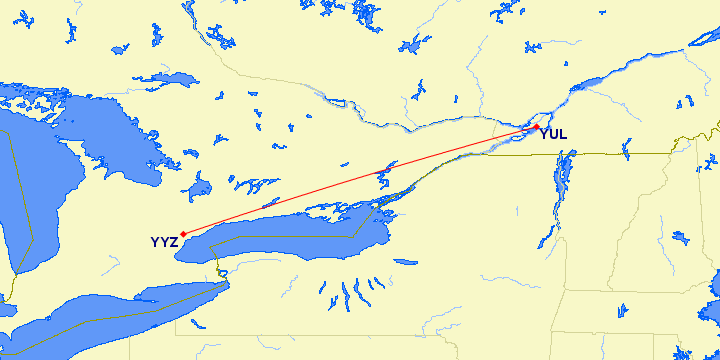
Toronto Lester B Pearson International
I took the train between the terminals from the Sheraton to terminal 1, where the counters of Air Canada are located. I used self check in facilities as the lines at the Star Gold counters were quite long, but compared to the regular lines at the Economy Counters the lines were short. But I hate queuing and as I was traveling light – read no luggage to check – I used the self check in machines.
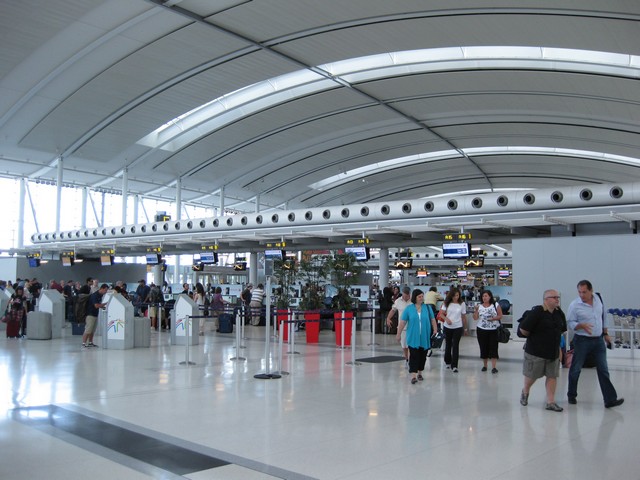
All boarding passes for the next three flights were printed and I noticed that Lufthansa had assigned me a new seat on the LHR – DUS flight. This happened quite a few times in the past and I really hate this, especially as I pre reserved an aisle seat and now got a window seat also I have aisle seat as preferred seat in my online profile.
Security was quick, although a man was standing there and it seems he was queuing for security, but in the end he was not. No need to take my shoes off this time and ten minutes later I was in front of the elevator up to the Maple Leaf Lounge of Toronto’s Domestic Terminal. The lounge agent asked me, if I would prefer to get on an earlier flight to Montreal. I told her sure, if this is possible and she put me on standby for the 18:00 flight to Montreal, which is the flight, which continues to Geneva and therefore done with a widebody, a Boeing 767. She also changed my seat on the YUL – LHR flight to a seat of the middle section. The flight was open in most classes and therefore the chances that the middle seat of the 2-3-2- configured plane remained empty were not that bad. The agent shared my impression and therefore offered to move me to 21 F. She advised me to head down to the gate around 17:30 and see if the standby list for the flight to Montreal cleared. She rated my changes as quite good, but could not promise anything.
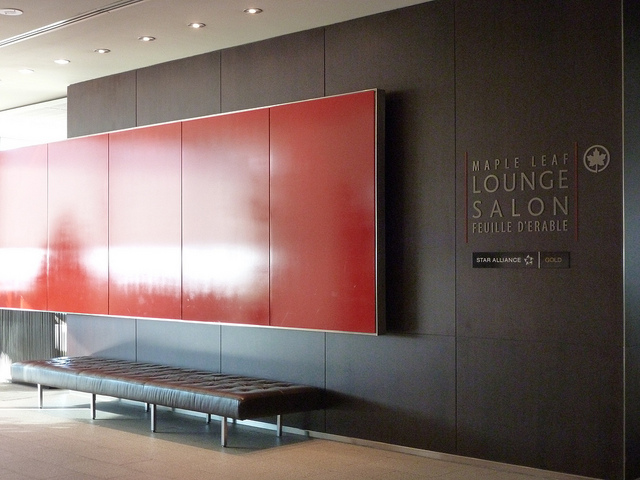
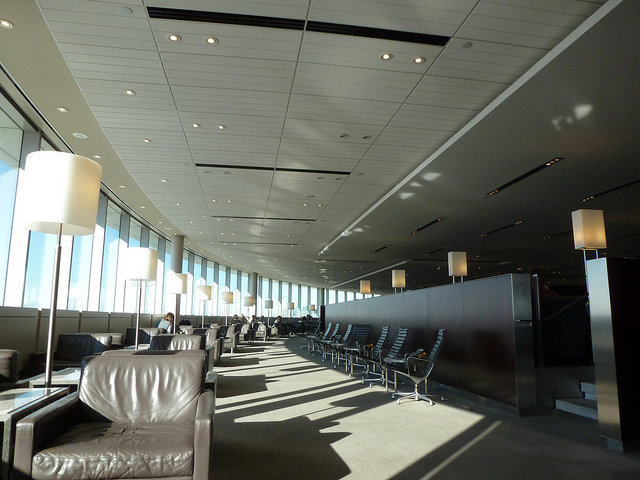
The domestic lounge is quite big and also it was a Sunday afternoon quite busy. However, I had no problem to find a free seat. The offerings at the buffet were four different choices of soup, mixed salad, vegetables and cookies and chips. Bread was also available. A wide selection of beverage, both alcoholic and non alcoholic, were offered for self service. I went for a can of ginger ale and a tomato soup.
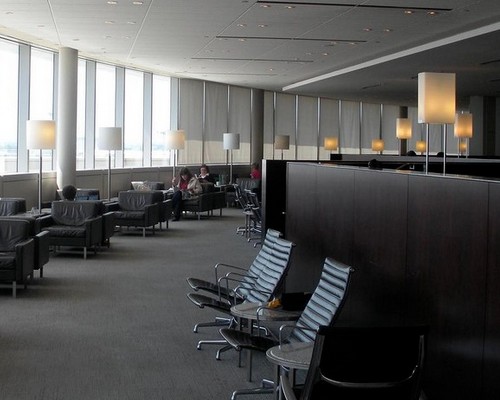
I spent the next hour in the lounge reading in the newspapers and magazines, which were available in the lounge.
I headed down to the gate around 17:25. The gate agent told me, she would clear the standby list in a couple of minutes and would call me if the waiting list cleared, what she was expecting to do. Ten minutes later my name was called and I was assigned a boarding pass and taken off the later flight. The flight to Montreal was running a bit late. Catering was done and the delay was announced with approximately 15 minutes.
I had already looked for the registration of our plane to Montreal, which was C-FPCA. This Boeing 767-300ER was an older plane and delivered to Canadian Airlines International on April 18, 1989. Canadian International Airlines or short Canadian was Canada’s second largest airlines.
Canadian was founded on March 27, 1987 when Pacific Western Airlines purchased Canadian Pacific Air Lines, which had recently acquired Eastern Provincial Airways and Nordair. Two years later Canadian acquired Wardair which has a network to the UK and Europe, the weaker part in Canadian networks.
Canadian Airlines survived the 1991 airline industry slump and further streamlined by a restructuring strategy with the goal to improve the profitability of Canadian Airlines by its CEO Kevin Benson. Canadian was also one of the founding members of the Oneworld airline alliance, along with Qantas, American Airlines and British Airways at this time. Unfortunately the Asian Crisis hit Canadian quite hard with the most destinations in its network being in Asian. Finally after many other options including one of being taken over by American Airlines failed, Canadian Airlines was acquired by Air Canada in 2000. There was a lot of lobbying lead by then American Airlines CEO Donald J. Carty to ease foreign ownership restrictions on Canadian airlines. American Airlines had bought a 25% interest in Air Canada and wanted to move Air Canada, one of the founding members of Star Alliance, to Oneworld to strengthen the network of oneworld in Asia. As we all know, this did not happen and on March 29, 2001 the plane was transferred to Air Canada.
The Boeing 767-375 ER is equipped with two CF6-80C2 engines by General Electric Aviation. The CF6-80CB2 turbofan engine is also used for the Boeing 747-400 in a modified variation.
Boarding started again with families with small children, passengers in Business Class and Aeroplan elites and Star Golds.
03 July 2011
YYZ – YUL
[Toronto Lester B. Pearson International – Montreal Pierre Elliott Trudeau / Dorval]
AC 830 (Air Canada); Boeing 767-300 (C-FPCA)
Gate 133
18:00 – 19:10 [effective 18:30 – 19:46]
Economy Class
Seat 24 A
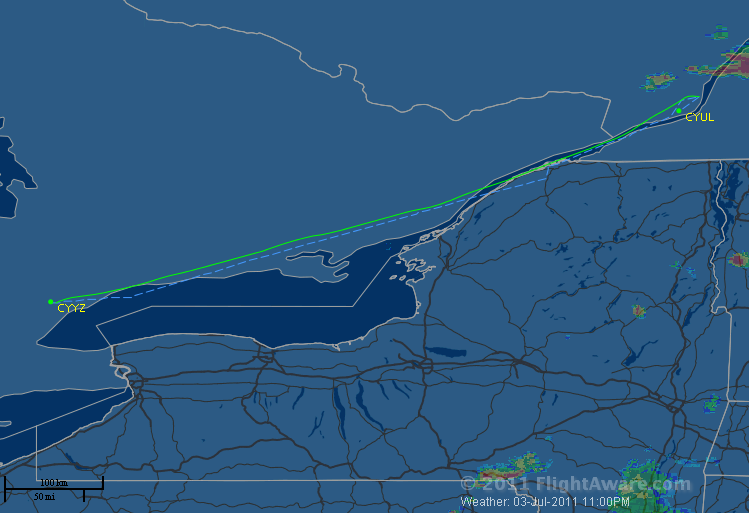
I boarded quite early was able to store my belongings in the empty overhead bin. Since the overhead compartments of the 767 are somehow small, pre boarding is not only an advantage; it is a must if you want to store your carry on close to your seat.
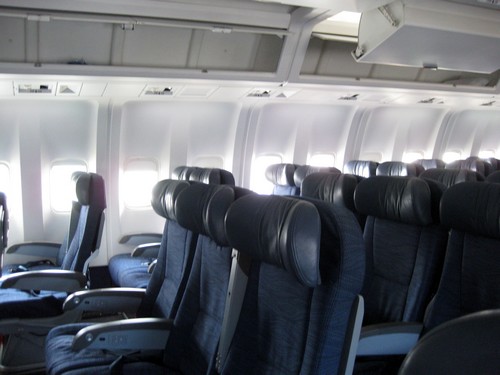
The plane was equipped with 24 seats in Ececutive First, which are fully flat and arranged in herringbone style. The seat pitch is 70 inch while the seat pitch is only 20.35 inch. Economy has a seat pitch of 31 to 32 inch and a seat pitch of 17.83 inch. All seats have AVOD as usual on Air Canada.
The plane filled with passengers and was full in all classes. Some people mixed the slight different seat numbers of the middle section which were not au par with the rows at the windows. But this was sorted out, but caused some seat changes. The safety video was shown while we were still at the gate. A few minutes earlier the captain had welcomed us on board as well and informed us about flying time. His welcome speech was made in English and soon translated into French by the crew and and also in German. The later caught me by surprise; I had not expected to hear German on this flight, although this flight was continuing to Geneva, which is in Switzerland, but in the French part.
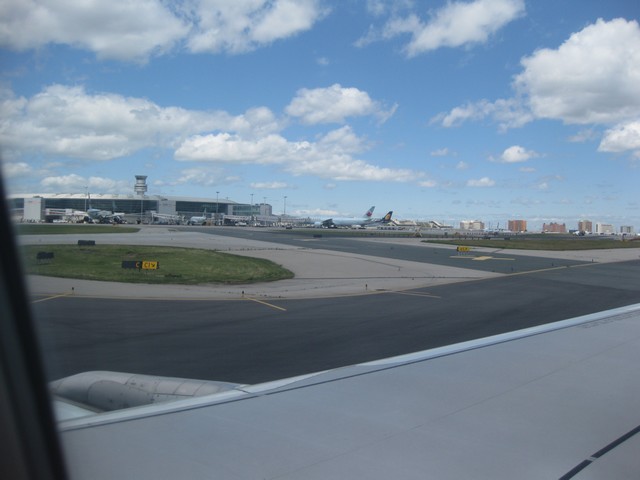
We pushed back with a delay of 30 minutes at 18:30 and taxied for the runway, where we had to wait behind a 737 of AA, a Bombardier AC Jazz jet for take-off. A few minutes later it was our turn, the captain powered the engines of this 767 and at 18:51 we climbed in the sky for the short hop to Montreal.
The inflight entertainment system was running on this short flight, but the time of Toronto and Montreal was one hour late and not correct.
After only a couple of minutes in flight the seat belt signs were switched off and the crew began the service. Headphones were distributed, which were free of charge for those flying to Geneva, everybody else had to pay 3 CAD. A quick beverage round followed on this 55 minute flight to Toronto. The crew hurried and finished the service as we already had begun our descend into Montreal’s Pierre Elliot Trudeau Airport.
The approach was a bit bumpy and we touched down safely at 19:38. Despite the fact we were running late, we had to wait on the tarmac to let another plane pass. The crew made announcements for those continuing to Geneva, who had to leave the plane and also took all their belongings with them. At 19:46 we arrived at the gate A11B at Montreals Domestic Terminal and it took a few minutes before I was able to leave the plane and entered the crowded domestic terminal.
